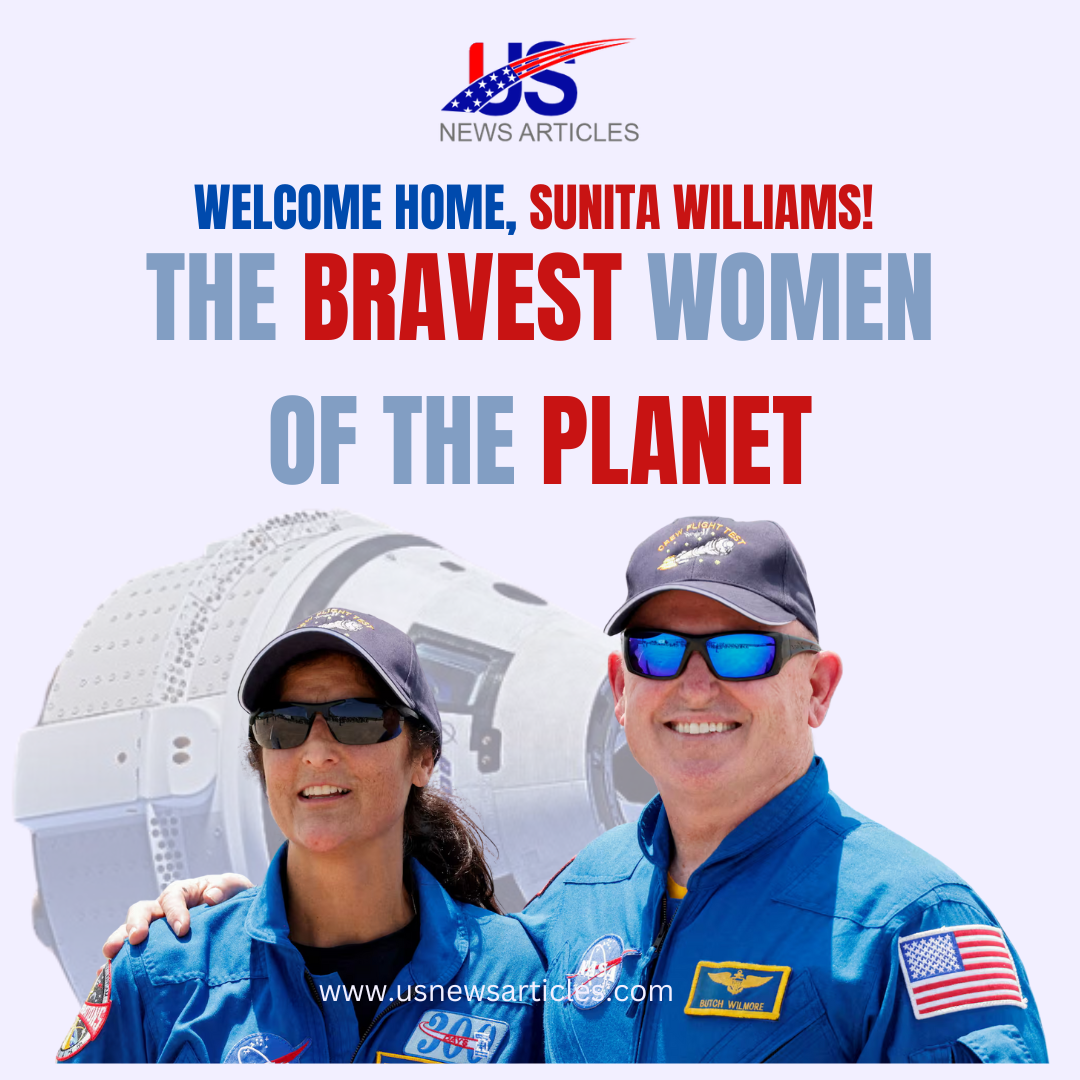
Introduction
In the vast expanse of the cosmos, where the boundaries of human capability are tested, one name shines brightly: Sunita Williams. An astronaut, a naval officer, a record-breaker, and an inspiration to millions, Williams has earned her place as one of the bravest women on the planet. Her journey to space and back is not just a tale of scientific achievement but a testament to the indomitable human spirit. This article delves into the life, mission, and triumphant return of Sunita Williams, celebrating her as a true heroine of our time.
A Star is Born: Early Life and Aspirations
Sunita Lyn Williams, born on September 19, 1965, in Euclid, Ohio, was destined for greatness. Sunita, the daughter of Indian-American neuroanatomist Deepak Pandya and Slovenian-American Ursuline Bonnie Pandya, grew up in a household that valued education, curiosity, and hard work. Her fascination with the stars began early, and she dreamed of exploring the unknown.
Williams’ path to space was paved with determination. She graduated from the U.S. Naval Academy in 1987 and became a naval aviator, flying helicopters and later serving as a test pilot. Her exceptional skills and leadership qualities caught the attention of NASA, and in 1998, she was selected as an astronaut candidate. From that moment, her journey to the stars began.
The Call of the Cosmos: Preparing for Space

Becoming an astronaut is no small feat. Williams underwent years of rigorous training, from learning the intricacies of spacecraft systems to surviving in extreme environments. She trained in underwater facilities to simulate spacewalks, practised emergency procedures, and studied the science behind the experiments she would conduct in space.
Her first mission to the International Space Station (ISS) in 2006 was a milestone in her career. During that mission, she set records for the longest spaceflight by a woman (195 days) and the most spacewalk time by a female astronaut (over 29 hours). These achievements cemented her status as a pioneer in space exploration.
Life Among the Stars: Aboard the ISS
The International Space Station, a symbol of international cooperation, became Williams’ home during her missions. Orbiting Earth at 28,000 kilometres per hour, the ISS is a microgravity laboratory where astronauts conduct groundbreaking research. Williams’ time aboard the station blended hard work, scientific discovery, and awe-inspiring moments.
Her daily routine included conducting experiments, maintaining the station, and exercising to counteract the effects of microgravity. Williams participated in studies on fluid dynamics, plant growth, and the effects of space radiation on the human body. Her work contributed to advancements in medicine, technology, and our understanding of life in space.
One of the most challenging aspects of life aboard the ISS is the isolation and confinement. Yet, Williams thrived in this environment, finding joy in the breathtaking views of Earth and the camaraderie of her crewmates. Her ability to adapt and remain positive in the face of adversity is a testament to her strength and resilience.
A Walk Among the Stars: Spacewalks and Records
Spacewalks, or extravehicular activities (EVAs), are among the most demanding tasks an astronaut can undertake. Clad in a bulky spacesuit, Williams ventured outside the ISS to perform maintenance, repairs, and upgrades. Her calm demeanour and technical expertise during these high-stakes operations earned her the admiration of her peers and the global space community.
During her missions, Williams set multiple records, including the most spacewalk time by a woman. Her achievements shattered stereotypes and inspired countless young women to pursue careers in science, technology, engineering, and mathematics (STEM).
The Journey Home: Returning to Earth
After months of living and working in space, the time came for Williams to return to Earth. The journey home is one of the most critical and perilous phases of a space mission. The Soyuz spacecraft, which had served as her lifeboat during the mission, would now carry her back to the planet she called home.
The descent began with the undocking of the Soyuz from the ISS. As the spacecraft drifted away, Williams took one last look at the station that had been her home. The re-entry process was intense, with the spacecraft hurtling through Earth’s atmosphere at speeds exceeding 28,000 kilometres per hour. The exterior of the Soyuz heated up to thousands of degrees, creating a fiery glow visible from the ground.
Parachutes deployed to slow the spacecraft’s descent, and retro-rockets fired just before landing to cushion the impact. The Soyuz touched down on the steppes of Kazakhstan, marking the end of Williams’ mission and the beginning of her reintegration into life on Earth.
Back on Solid Ground: Readapting to Earth
Returning to Earth after a long-duration space mission is a profound experience. The human body undergoes significant changes in microgravity, including muscle atrophy, bone density loss, and fluid redistribution. Williams and her crewmates were carefully extracted from the Soyuz and placed on reclining chairs to help them readjust to gravity.
The days and weeks following her return were filled with medical evaluations, physical therapy, and debriefings. Williams’ resilience and determination were evident as she worked to regain her strength and share her experiences with the world.
A Legacy of Inspiration
Sunita Williams’ return from space is more than just the conclusion of a mission; it is a celebration of human achievement. Her contributions to science and exploration have paved the way for future generations of astronauts, particularly women, to follow in her footsteps.
Williams’ journey also highlights the importance of international collaboration in space exploration. The ISS, a partnership between NASA, Roscosmos, ESA, JAXA, and CSA, is a symbol of what humanity can achieve when we work together.
Conclusion: A Heroine for the Ages
Sunita Williams’ story is one of courage, perseverance, and inspiration. Her journey to space and back reminds us of the boundless potential of the human spirit. As we look to the future, with plans for lunar bases and missions to Mars, Williams’ legacy will continue to shine as a beacon of hope and inspiration.
She is not just an astronaut; she is a trailblazer, a role model, and one of the bravest women on the planet. Sunita Williams has shown us that the sky is not the limit—it is just the beginning.

